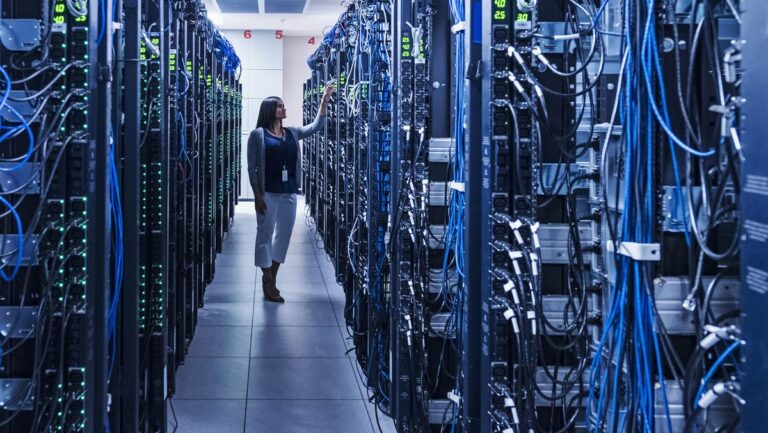Choosing the perfect server system for your business can be challenging and impact your business’s efficiency, security, and scalability.
Servers are the backbone of your IT infrastructure, handling everything from data storage to application hosting to network management. However, with many available options, selecting the perfect server can take time and effort.
That’s why there are some good points to remember when choosing the best server for your business.
Let’s consider ten factors when choosing the best server for your enterprise.
1. Know Your Business Needs
Before checking into tech-based specifications of servers, you must know what your business specifically needs. It includes understanding your current and expected workloads, the number of potential users, and the types of all your applications.
Proper knowledge of your business needs and demands can help you purchase a server that meets your expectations. To do this, you can discuss your IT team’s prominent requirements and take action accordingly.
2. Determine the Right Server Type
Matching the server’s design with your specific operational needs and physical constraints is crucial when determining the right server type for your enterprise.
For example, rack servers are ideal for data centres where space efficiency and scalability are paramount. They are mounted in racks and offer high-density configurations.
On the other hand, Tower servers resemble traditional desktop units and are well-suited for small to medium-sized businesses or remote locations where space is less of a concern.
Blade servers are perfect for large enterprises requiring high-density computing, storage and scalability because of their modular design and ability to fit into a blade enclosure.
Lastly, microservers are compact and energy-efficient, making them suitable for scale-out environments where lightweight tasks are performed.
3: Evaluate Performance Specifications
Performance is a crucial factor in server selection. Key specifications to consider include:
- Processor (CPU): The CPU acts as the brain of the server. Look for high-performance processors with multiple cores to handle concurrent tasks efficiently. Consider processors from leading manufacturers like Intel and AMD.
- Memory (RAM): Sufficient RAM is essential for smooth operation and handling large datasets or multiple applications simultaneously. Opt for servers with expandability options to accommodate future growth.
- Storage: Consider both the type and capacity of storage. SSDs (solid state drives) perform faster than traditional HDDs (hard disk drives). Evaluate your storage needs based on data volume, speed requirements, and redundancy.
4: Consider Scalability
The most important part of server selection is determining if it can match your futuristic requirements or technological growth. Ensure your chosen server supports easy upgrades, such as additional memory, storage, or processing power.
Modular servers, such as blade servers, offer excellent scalability options, allowing you to add more blades or resources as needed. Evaluate how the server’s architecture supports scaling vertically (adding resources to the existing server) and horizontally (adding more servers).
5: Assess Network Connectivity
Network connectivity is crucial for server performance and reliability. Evaluate the server’s network interface cards (NICs) and their support for various speeds, such as 1GbE, 10GbE, or higher. The number of NICs can also impact network redundancy and load balancing. Ensure the server supports the network standards and protocols required for your enterprise’s network infrastructure.
6: Review Power and Cooling Requirements
Reviewing power and cooling requirements is essential when selecting a server, as these factors directly affect the server’s performance, longevity, and operational costs. Servers can generate significant heat and consume substantial power, necessitating an efficient power supply and cooling system to maintain optimal operation.
Evaluate the server’s power requirements to ensure compatibility with your existing electrical infrastructure. Consider energy-efficient components to reduce long-term operational costs. Additionally, the cooling must be assessed to prevent overheating, which can impact performance and hardware lifespan.
7: Evaluate Security Features
Security is a top priority for any enterprise server. Consider servers that come with integrated security features, such as:
- Hardware-based security modules: These provide encryption and secure storage of sensitive data.
- Trusted Platform Module (TPM): TPM enhances security by ensuring hardware integrity and protecting against unauthorised access.
- Secure Boot: This feature helps prevent malicious code from loading during the server’s startup process.
Also, consider how easily the server integrates with your existing security infrastructure, such as firewalls and intrusion detection systems.
8: Consider Vendor Support and Warranty
The quality of vendor support and warranty terms can significantly impact your server’s lifecycle and maintenance. Choose a vendor with reliable technical support, responsive customer service, and comprehensive warranty options.
Evaluate the warranty coverage, including on-site support, parts replacement, and extended service plans. Reliable vendor support ensures timely issue resolution and minimises downtime.
9: Evaluate Total Cost of Ownership (TCO)
Evaluating the Total Cost of Ownership (TCO) is a critical step in selecting the right server. It encompasses the initial purchase price and the ongoing expenses associated with maintaining and operating the server throughout its lifecycle. This includes maintenance costs, energy consumption, cooling requirements, and potential upgrades.
By considering these long-term costs, you can gain a clearer picture of the overall financial impact of your server choice. A server with a lower upfront cost might incur higher ongoing expenses, while a more expensive server might offer greater efficiency and lower operational costs over time.
10- Compatibility with Existing Infrastructure
Ensure that the new server integrates seamlessly with your existing IT infrastructure. Consider compatibility with your current operating systems, applications, and hardware components. Verify that the server supports your enterprise’s software requirements and can work with existing network configurations and storage solutions. Compatibility ensures smooth deployment and minimises potential disruptions during the transition.
Conclusion
The selection of the perfect server system for your business enterprise includes a proper evaluation of specific needs, requirements, and long-term business goals. Some of the prominent factors you must consider while server selection are the type of the server, performance specifications, extensibility, connectivity options, power and cooling mechanisms, etc. With the proper knowledge and analysis of the options mentioned above in the article, you can make a well-informed and strategic decision.




